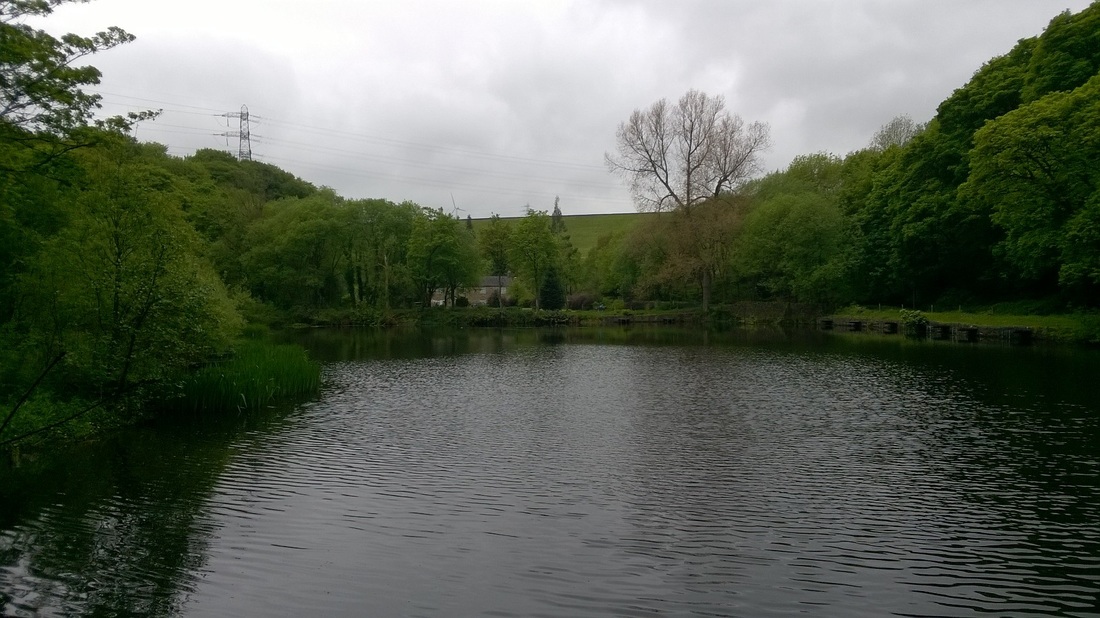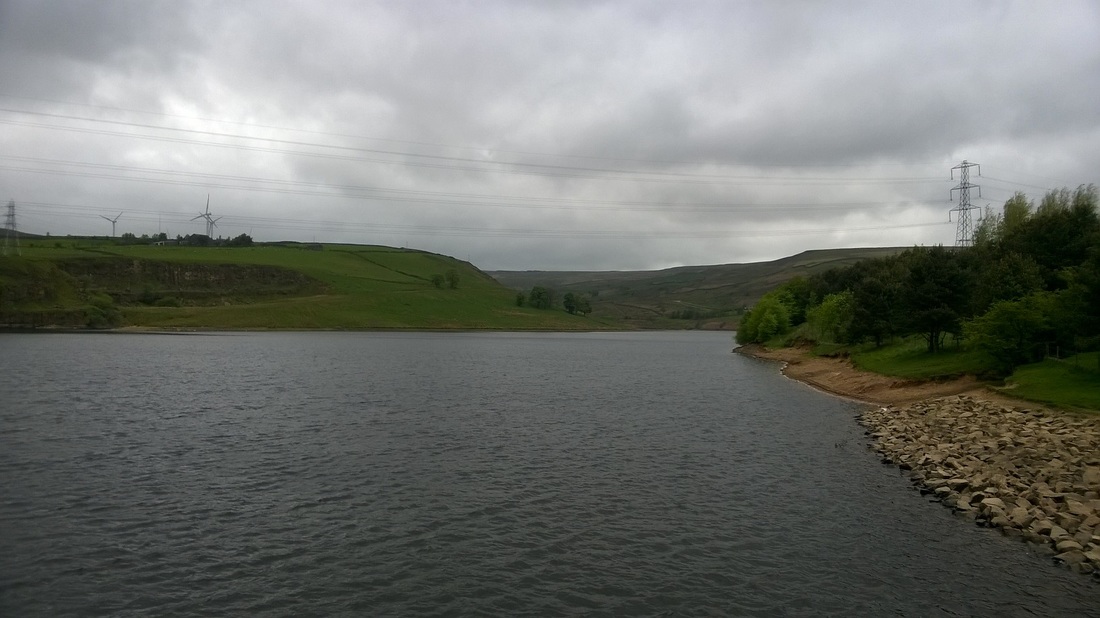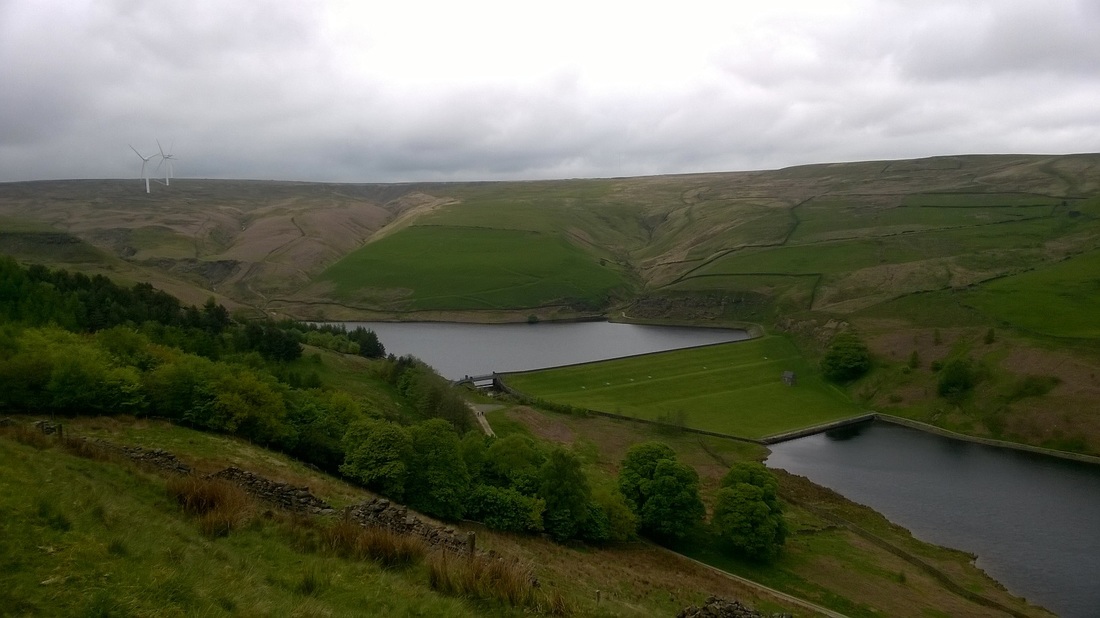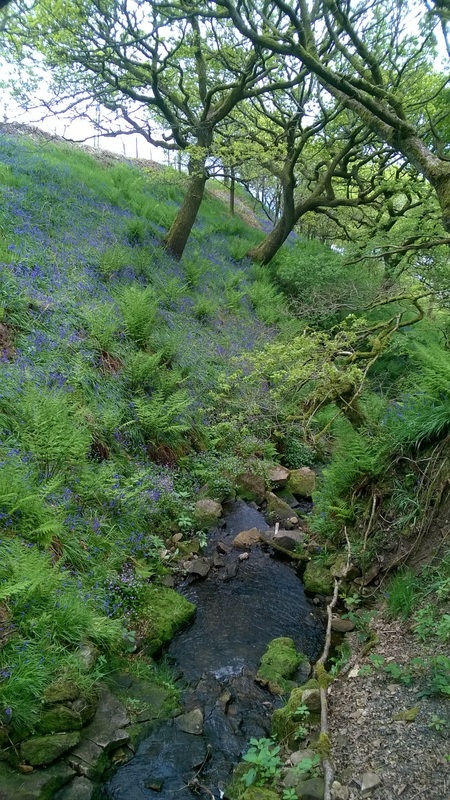The Naden reservoirs (Lower Naden, Middle Naden and Higher Naden) were completed in 1846 by the Heywood Waterworks Company in the valley above the village of Greenbooth despite objections from local mill owners who feared interruptions to their water supplies. In 1952 the then Heywood and Middleton Water Board decided that another reservoir was required to supply water to the growing population of nearby Rochdale and started construction of the Greenbooth reservoir in 1956. Construction resulted in the submerging of the village of Greenbooth under the waters of the reservoir which was officially opened in 1965, it cost £2.1m to build and holds 700 million gallons of water.
The village of Greenbooth was built by James Butterworth close to his weaving mill as accommodation for his workers and consisted of about 80 cottages, a cooperative store and a school but no pub or church resulting in a two mile walk on Sunday mornings for people attending Sunday church services.
The mill was built in the 1840's on or close to the site of a 18th Century corn mill and specialised in producing woollen flannel which was then distributed to clothing manufacturers across Northern England and beyond. There were two rows of terraced housing immediately next to the mill and larger houses for managers. Rents were deducted from wages and other deductions were made to pay for such items as milk deliveries. The village had a gas supply, but no electricity.
Ownership of the mill and village passed to Mr R.H Hutchinson who married James Butterworths daughter. Mrs Hutchinson apparently used to travel around the village in a horse drawn carriage making regular inspections of the school and each house in the village. Their two sons later managed the mill until it went bankrupt.
The mill closed in 1911 but the village continued to exist, the school closed in 1930 resulting in the children having to walk to nearby Norden.
At the time when the village had to be demolished it contained 46 cottages although 20 of these were derelict .
The Greenbooth dam is 117ft high and 1000ft long, it is built on a concrete foundation and has a central core of puddle clay, the North side of the dam is constructed from hard shale which enables the clay to stay damp and plyable whilst on the South side subsoil was used to create the sloping embankment to withstand the immense water pressures. Fissures in the exposed stone walls along the sides of the reservoir had to be sealed before the reservoir could be filled.
There was a problem with the dam in 1983 when it was reported that the dam appeared to be sinking, A round the clock watch was kept on the dam and 25 million gallons of water / day were drained. Repairs were undertaken and by 1986 the reservoir was back to full capacity
Lower Naden reservoirs dam was removed in the 1990's, the original line of the dam can still be seen today.














 RSS Feed
RSS Feed
